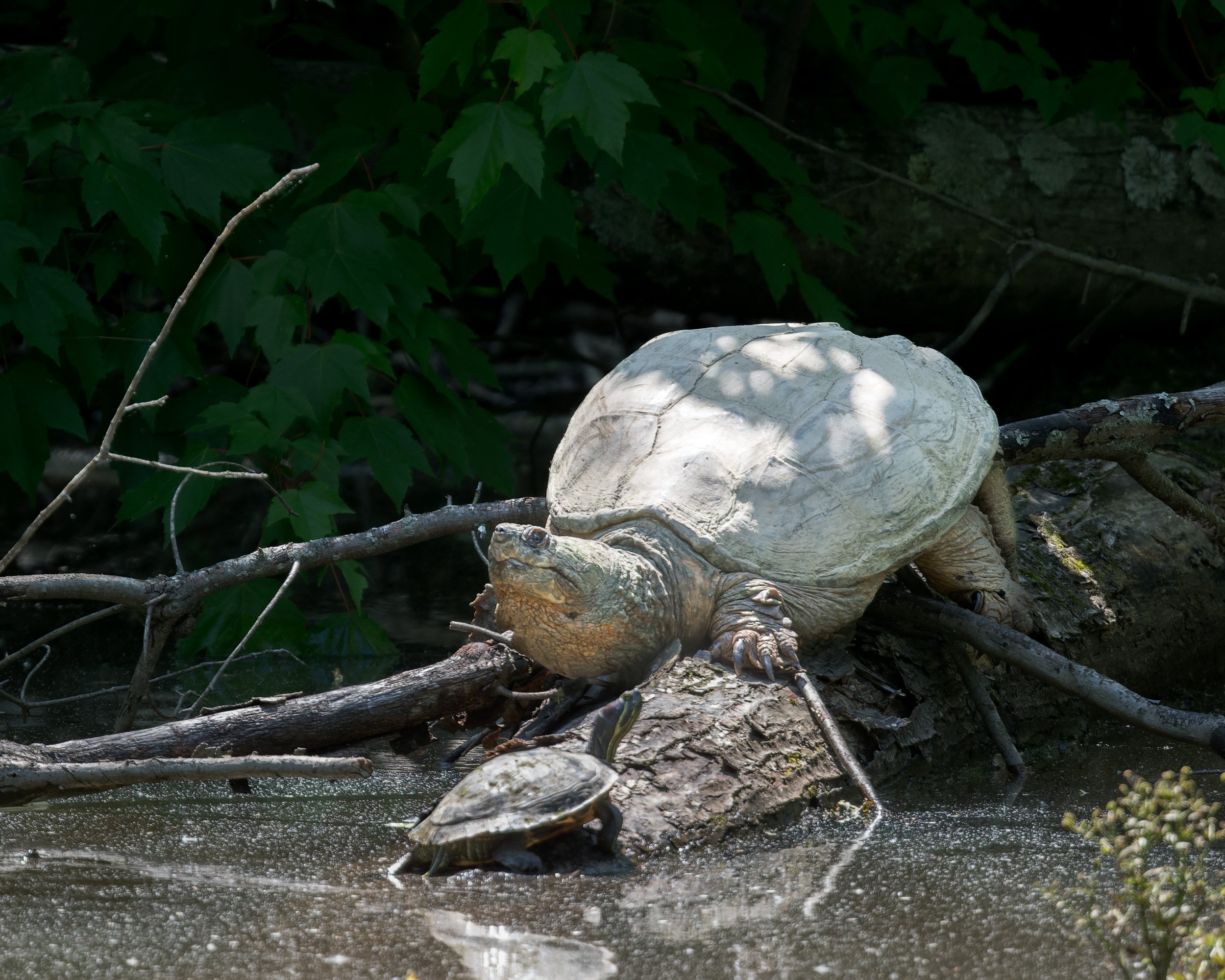Each year I like to share the results of the Cornell Lab of Ornithology’s Global “Big Day.” It’s something I look forward to every spring, and I find it both inspiring and moving.
Prothonotary warbler at Caperton Swamp Park, home to a couple nesting pairs. Most New World warbler species pass through Louisville on their way to breeding grounds further north, but a few, like this prothonotary, breed in Kentucky.
What Is a “Big Day?”
For those who aren’t familiar, a “Big Year” for birders is a decision to identify as many species as you possibly can in a single year. Different people go to different lengths in this pursuit, but humans seem to like exploring extremes, and Big Years are no exception. In 2016, Dutch birder Arjan Dwarshuis set the current individual world record of 6,852 species. This feat took him to forty different countries, and is obviously a somewhat grueling full-time job, not for the faint of heart or faint of wallet. But many birders choose to do less extreme versions, sometimes in their own country or state. (If you want some clean entertainment, watch “The Big Year” with Steve Martin, Owen Wilson, and Jack Black–it’s funny because it’s true!).
Cornell’s Global Big Day is a collaborative effort–same idea as a Big Year, but a single day of collective, vs. individual, effort. On Saturday, May 11, over 60,000 birders from 273 different countries and territories worked together to find 7,394 species of birds, or about 68% of the 10,825 species known to exist. I simply love the idea of it–thousands of people working together for the sake of something we all care about. Wow.
Not My Biggest Big Day…
As always, I aim for an even 100 species. Last year I made it with 102. This year it the stars did not align (they were apparently aligning to bring the aurora borealis to Kentucky instead…). In a solid eight hours and 8.1 miles of birding, I found seventy-seven species. Seventy-seven is still more species than most people would imagine are present within a few miles of home, but it was my lowest total for the past few years.
Here is my complete Big Day list.
The Louisville birding community collectively tallied 145 species, so while there were definitely another twenty-three species out there, finding them would have been a process of driving all over the county to pick up a bird here and a bird there, and by about 6pm, I called it a day.
Much depends on the flow of migrants, especially warblers and shore birds, and that flow depends on many factors. The weather between here and Central and South America in the days leading up to Big Day are a major influence. Clear skies and southerly breezes to the south and a weather system hovering just north of the city can result in an incredible “fall out” of birds on any given day. But if migrants have been stuck here for a few days by storms to the north, they can leave en masse when the weather clears, and things will be quiet for a few days until the next wave arrives.
Highlights
A cerulean warbler! I found the lone cerulean for Jefferson County at Cherokee Park. Notorious for staying hidden high in the treetops, this one was true to form. It called repeatedly from a tree very close by and I got a recording to support the ID, but I never managed to see it. Birding by ear is an essential skill if you want to find these elusive species.
12 warbler species - it was not a great day for me with warblers. A dozen is not bad, but on a really good day we might find 25 of the 32 or so possible in one location. Collectively the Jefferson County birding community found 29, so they were here, just spread out.
4 bald eagles - including three adults soaring together
An Extreme Rarity Makes a Big Day Appearance!
The star of the Big Day show in Louisville was the state’s 11th recorded painted bunting! I did not see this rarity on Big Day, but I was fortunate to pay it a visit earlier in the week. It showed up on Derby day at a homeowner’s feeder. Although not birders, they posted it on eBird, not realizing that it would instantly draw birders from a hundred miles or more. The local birding community worked with the homeowner to setup a manageable schedule of visitors for this stunning little songbird.










